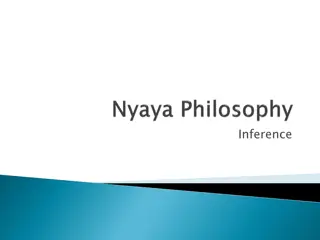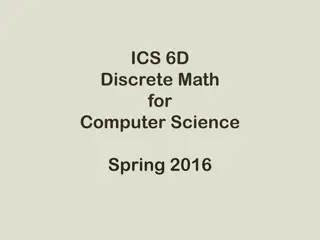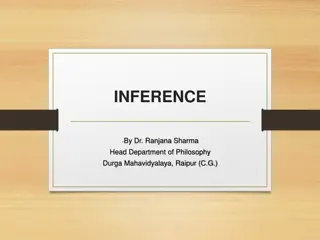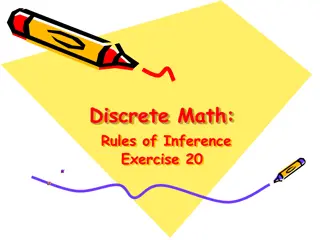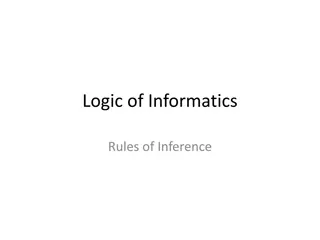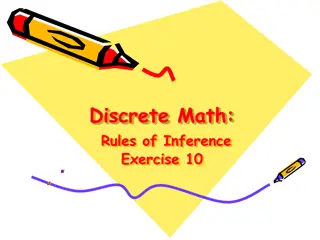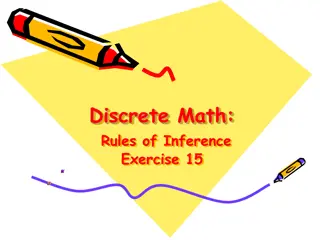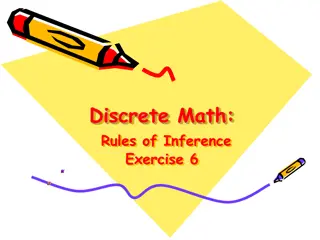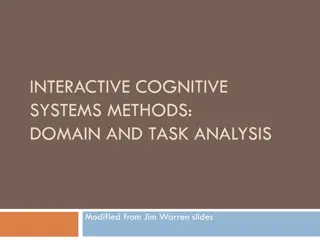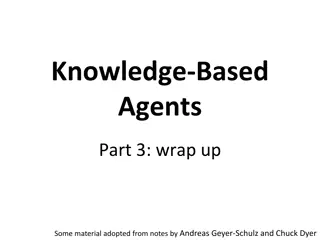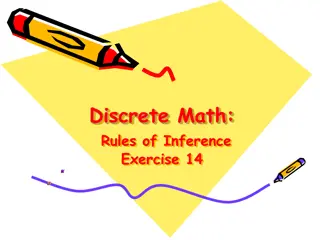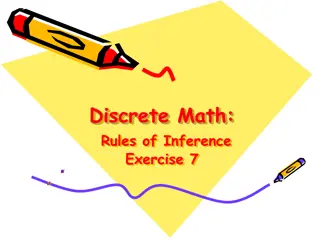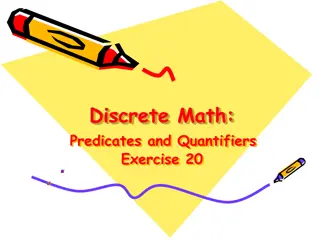Rules of Inference Exercise Solutions in Discrete Math
Solutions to exercise scenarios applying rules of inference in discrete mathematics including universal instantiation, modus ponens, and modus tollens. Explore conclusions drawn from premises regarding corporations, the United States, rodents, food gnawing, and more.
Uploaded on Sep 21, 2024 | 1 Views
Download Presentation

Please find below an Image/Link to download the presentation.
The content on the website is provided AS IS for your information and personal use only. It may not be sold, licensed, or shared on other websites without obtaining consent from the author.If you encounter any issues during the download, it is possible that the publisher has removed the file from their server.
You are allowed to download the files provided on this website for personal or commercial use, subject to the condition that they are used lawfully. All files are the property of their respective owners.
The content on the website is provided AS IS for your information and personal use only. It may not be sold, licensed, or shared on other websites without obtaining consent from the author.
E N D
Presentation Transcript
Discrete Math: Rules of Inference Exercise 8
Exercise For each of these collections of premises, what relevant conclusion or conclusions can be drawn? Explain the rules of inference used to obtain each conclusion from the premises. e) What is good for corporations is good for the United States. What is good for the United States is good for you. What is good for corporations is for you to buy lots of stuff. f) All rodents gnaw their food. Mice are rodents. Rabbits do not gnaw their food. Bats are not rodents.
Solution e) The first two conditional statements can be phrased as "If x is good for corporations, then x is good for the U.S." and "If x is good for the U.S., then x is good for you." If we now apply universal instantiation with x being "for you to buy lots of stuff,'' then we can conclude using modus ponens twice that for you to buy lots of stuff is good for the U.S. and is good for you. f) The given conditional statement is "For all x, if x is a rodent, then x gnaws its food." We can form the universal instantiation of this with x being a mouse, a rabbit, and a bat. Then modus ponens allows us to conclude that mice gnaw their food; and modus tollens allows us to conclude that rabbits are not rodents. We can conclude nothing about bats.
References Discrete Mathematics and Its Applications, McGraw-Hill; 7th edition (June 26, 2006). Kenneth Rosen Discrete Mathematics An Open Introduction, 2nd edition. Oscar Le in A Short Course in Discrete Mathematics, 01 Dec 2004, Edward Bender & S. Gill Williamson
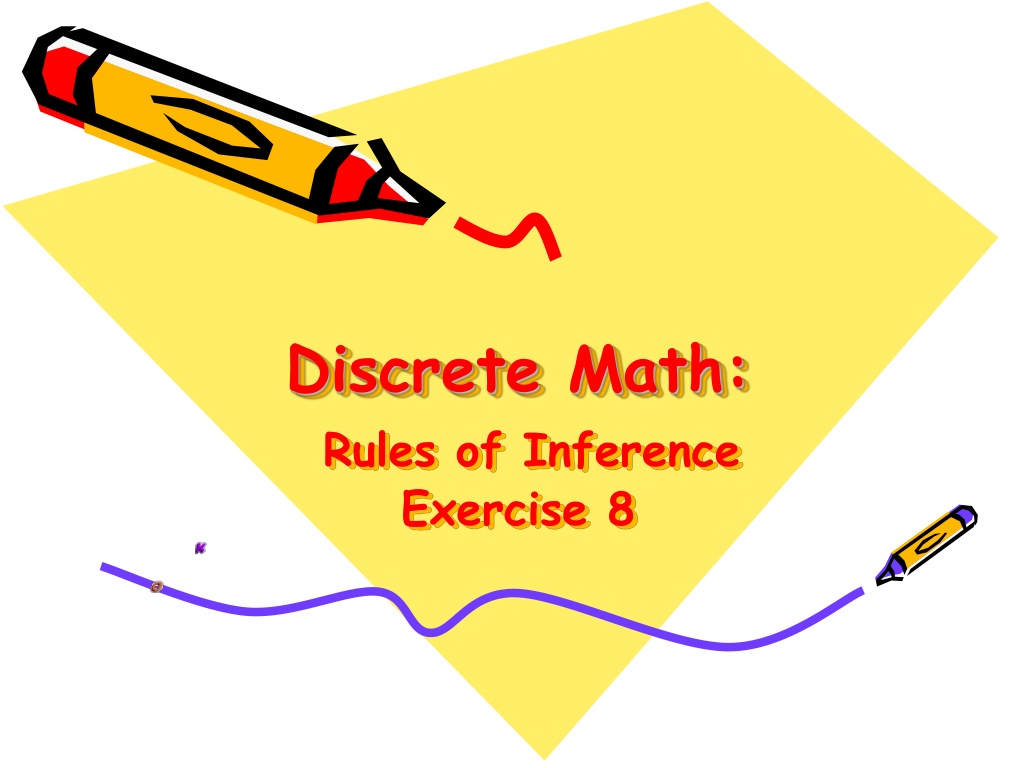
 undefined
undefined













